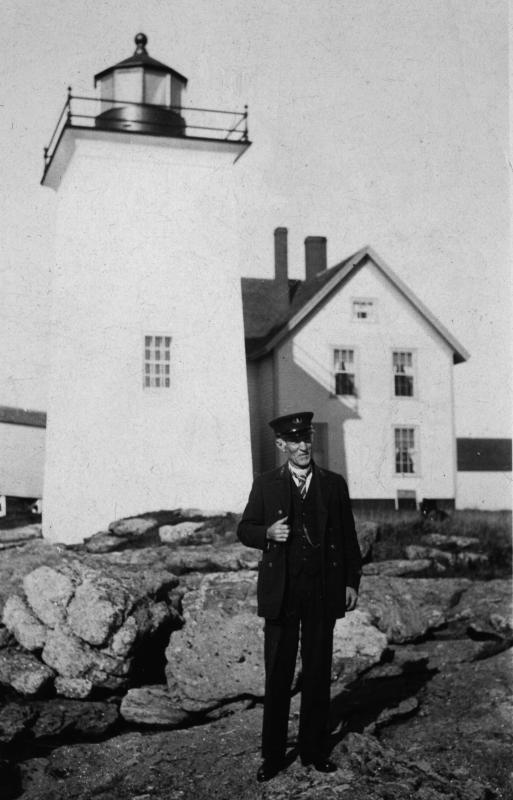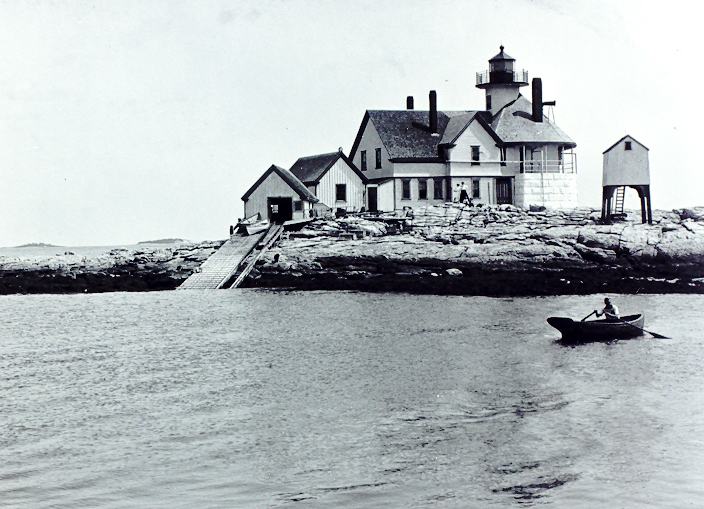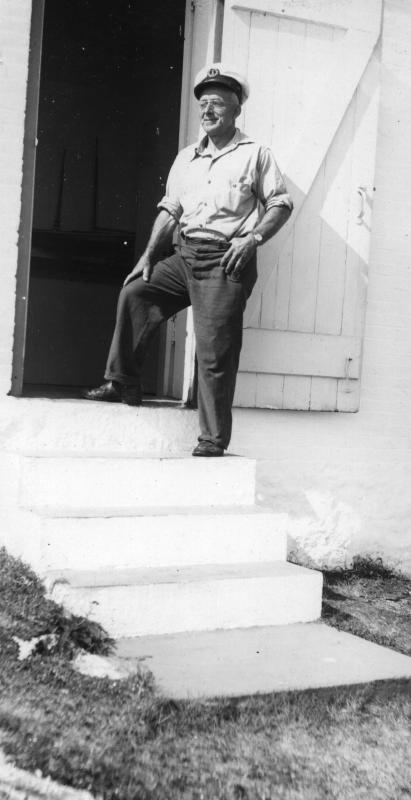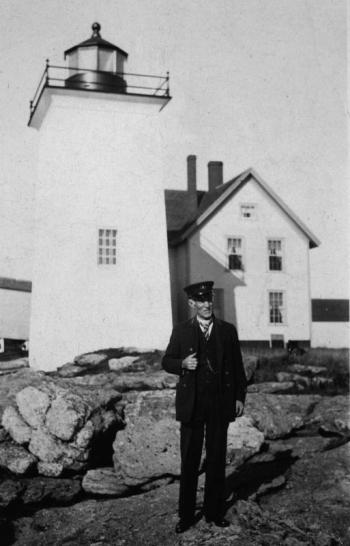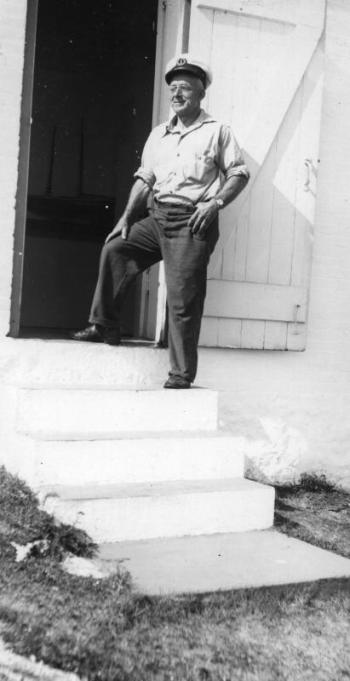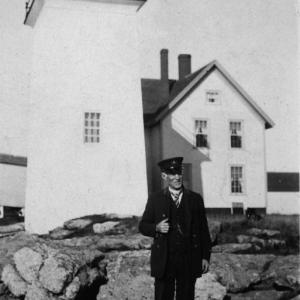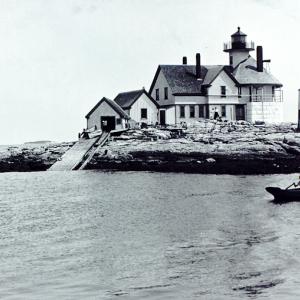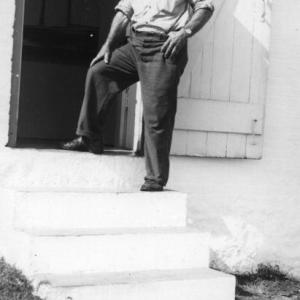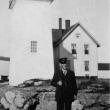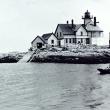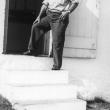Keepers’ Klippings
Using logbook entries and personal letters, “A Day in the Life of a Keeper – Part I” focused on lighthouse living in the 1800s. This sequel highlights the lives of keepers in the 1900s using oral histories and newspaper submissions to the Rockland Courier Gazette and Maine Coast Fisherman.
In the early 20th century, the introduction of radios, telephones, and outboard motors were welcome additions to lighthouse keepers, especially those at remote locations. By mid-century, the installation of underwater power cables became a true game changer - the flip of a switch replaced hours of cranking clockwork mechanisms and burning kerosene lamps. By 1998, light and fog sensory inventions had automated all of our nation’s lighthouses, with the fog detector being the advancement that sounded the death knell of lighthouse keepers.
The 1900s also brought about an administrative change in lighthouse management that affected the way-of-life for its keepers. On July 1, 1939, a new era in lighthouse administration began when the U.S. Lighthouse Service was abolished and its duties transferred to the U.S. Coast Guard, where the responsibility remains today.
Daily Routine - A typical day in the life of a lighthouse keeper was one of repetition. His routine was to light up at sunset and extinguish at sunrise. Early keepers with kerosene lamps had to re-trim the wick before midnight and keep night-watch in the event of a “smoke-out.” If the tower’s Fresnel lens created a flashing light, the winding of weights every six hours was also required. Come sunrise, the lamp was extinguished, lens and lantern glass cleaned, and adjustments made to necessary equipment.
After electrification, life was a lot simpler for the keepers. That flip of a switch at sunset allowed for a solid night’s sleep until sunrise, as a built in alarm was to alert them if anything went wrong. According to Burnt Island Keeper Randy Griffing (1974-77), “The bell in the upstairs hallway sounded on one occasion when the replacement lamp failed to properly seat itself after the active bulb had burned out.”
Fog Signal – Whether day or night, when thick fog or heavy weather set in (sleet, rain, or snow), keepers had to activate their station’s fog signal. Unable to distinguish a lighthouse’s beam, it was a sound signal that warned mariners of prominent headlands or navigational dangers. The various devices employed over time were cannons, bells, trumpets, whistles, sirens, and foghorns.
Offshore stations received more fog than inner harbor facilities, thus several keepers were present to keep steam-powered equipment operating during the early years. In August 1935, Keeper Justin Foss (1934-39) of the Cuckolds Lighthouse wrote, “Fog has been persistent here and we have blown the whistle 212 hours this month.” At that time, the frequency of the Cuckolds’ signal was a loud, three-second blast every minute.
Back then, and still today, every station maintains its own unique signal, or characteristic. This allows ship captains to determine position through distinctive combinations of long and short sounds. As a result of automation, mariners today control the sounding of the fog signal, which is activated on demand.
Housekeeping - In addition to attending to the Aids to Navigation, keepers carried out routine cleaning, polishing, painting, maintenance work, and general housekeeping duties.
According to Adele Muise Bailey, daughter of Burnt Island Keeper Joseph Muise (1936-1951), “Dad kept all the polished brass on a shelf in the workroom. The lamp, oil measures, dustpan, foxtail, and oil can all had their certain spot on the shelf. He lived like the inspector was coming every day, because he never knew.”
Keeping Watch - While the keepers’ priorities were the light and fog signals, they also kept daily record on positions of nearby navigational buoys, passing vessels, and the weather. Watch entailed not only keeping an eye out, but an ear as well, for the call of a distressed mariner.
On the night of September 10, 1932, Keeper Charles Knight’s dog alerted him of a cry for help south of Hendricks Head Light. He sounded the alarm by forcing the fog-bell’s hammer into overdrive. Many neighbors responded with Cozy Harbor’s Capt. Osmond Brewer arriving by dory. Keeper Knight pointed him in the direction of the call and within minutes he reappeared towing a skiff with two occupants. Knight stated, “The oarsman had apparently “caught a crab” with the oars and they got away, thus the couple were being helplessly carried out to sea.” After retirement as a lighthouse dog, Shep was awarded a bronze medal for his role in the rescue.
Another interesting watch-duty account was shared by Burnt Island’s Keeper Chris Cooney (1980-1983). He said, “One of my night-time vigils was to report bioluminescent trails in the water created by boat wake. In the early ‘80s, drug runners traveled up coastal waterways in unlighted boats to unload their goods.”
No Modern Conveniences - In 1954, the wife of Keeper Wendell Reece (1953-1958) described life on Ram Island as: “If we had all the modern conveniences, I would never want to leave Ram Island Light Station. As it is, we don't have any modern comforts, no electricity, no running water, and no bathroom. We're living a primitive life.”
Hobbies - Most lighthouse keepers loved living at remote stations, but isolation took a toll on some of the wives. Many hobbies were adopted by all members of the family with reading, sewing, crocheting, and weaving being a few. However, Burnt Island’s Keeper Albert Staples (1930-1936) took his hobby to a new level. After completing a correspondence course in all-wave radio from the National Radio Institute of Washington, D.C., he wrote, “Having very good reception on my radio set and the London chimes comes in clear every night at 6 o’clock. I have received programs from 11 different countries including Germany, England, and Italy.”
Shore Leave – Lighthouse families were allowed paid vacation each year. Early keepers were able to choose a family member or friend as a substitute, but after 1939 Coast Guard personnel were sent as relief keepers from Damariscove Life-Saving Station, and later on from Station Boothbay Harbor.
In January 1956, after returning from a 15-day leave with his wife and daughter, Cuckolds’ Keeper James Eyles wrote, “We were glad to get back home and intend to stay here and hibernate like three bears for the entire winter season.”
Tourists – In the “Instructions to Lighthouse Keepers,” they were required to give tours of the station if it did not interfere with their work. In September 1960, the Maine Seacoast Mission wrote, “At Burnt Island, home of the James McCullough family, children Sheila (11) and Stephen (9) go to school by boat every day, and in summer, they stay quite busy by showing visitors around the station. They showed it to us in fine style as their father was busy working on the broken-down generator, and their mother is soon to present them with a new sibling.”
Steve McCullough’s life on Burnt Island came full circle last summer when he returned as a volunteer interpreter in the “Return of the Keepers” program. He holds the distinction of being the last person alive to have cranked the weight-driven light and fog-bell mechanisms, and to have completed his homework by the light of a kerosene lamp – a true living legend!
Science teacher and retired Education Director at the DMR, Elaine Jones has been recognized for her vision, dedication and 30 years of public service. She designed the Maine State Aquarium and acquired/repurposed Burnt Island Light Station, where students, teachers and visitors alike shared hands-on learning through interactive exhibits and living history programs. Her passion for teaching continues as founder of the nonprofit Lighthouse Education & Nautical Studies (LENS).

